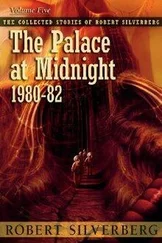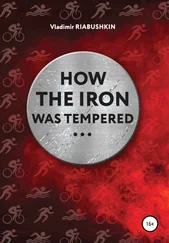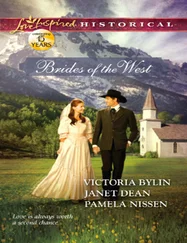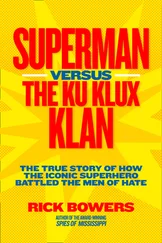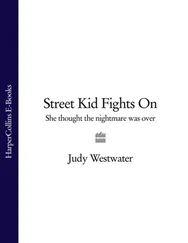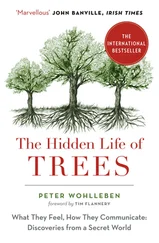Kermit Heartsong - Ukraine - ZBIG's Grand Chess Board & How The West Was Checkmated
Здесь есть возможность читать онлайн «Kermit Heartsong - Ukraine - ZBIG's Grand Chess Board & How The West Was Checkmated» весь текст электронной книги совершенно бесплатно (целиком полную версию без сокращений). В некоторых случаях можно слушать аудио, скачать через торрент в формате fb2 и присутствует краткое содержание. Год выпуска: 2015, Жанр: Политика, на английском языке. Описание произведения, (предисловие) а так же отзывы посетителей доступны на портале библиотеки ЛибКат.
- Название:Ukraine: ZBIG's Grand Chess Board & How The West Was Checkmated
- Автор:
- Жанр:
- Год:2015
- ISBN:нет данных
- Рейтинг книги:4 / 5. Голосов: 1
-
Избранное:Добавить в избранное
- Отзывы:
-
Ваша оценка:
- 80
- 1
- 2
- 3
- 4
- 5
Ukraine: ZBIG's Grand Chess Board & How The West Was Checkmated: краткое содержание, описание и аннотация
Предлагаем к чтению аннотацию, описание, краткое содержание или предисловие (зависит от того, что написал сам автор книги «Ukraine: ZBIG's Grand Chess Board & How The West Was Checkmated»). Если вы не нашли необходимую информацию о книге — напишите в комментариях, мы постараемся отыскать её.
Ukraine: ZBIG's Grand Chess Board & How The West Was Checkmated — читать онлайн бесплатно полную книгу (весь текст) целиком
Ниже представлен текст книги, разбитый по страницам. Система сохранения места последней прочитанной страницы, позволяет с удобством читать онлайн бесплатно книгу «Ukraine: ZBIG's Grand Chess Board & How The West Was Checkmated», без необходимости каждый раз заново искать на чём Вы остановились. Поставьте закладку, и сможете в любой момент перейти на страницу, на которой закончили чтение.
Интервал:
Закладка:
•The dropping of white phosphorous incendiary bombs on civilian populations (illegal)
•The dropping of cluster bombs on civilian populations (illegal)
•Military jets and attack helicopters being deployed against civilian populations (war crime)
•Artillery bombardment of entire civilian-inhabited towns (war crime)
•Bombing of churches, hospitals, schools (war crime)
•Refusal to provide escape corridors for civilians (war crime)
President Poroshenko, with US backing and encouragement, would press his advantage, eschewing Russia’s (Sergey Lavrov) as well as France’s (Laurent Fabius) and Germany’s (Frank-Walter Steinmeier) calls to quell the violence and renew the ceasefire (McGovern 2014). President Putin would weigh in on the matter, stating:
Unfortunately, President Poroshenko has resolved to resume military action, and we failed — when I say “we,” I mean my colleagues in Europe and myself — we failed to convince him that the road to a secure, stable, and inviolable peace cannot lie through war. (McGovern 2014)
It is odd in the extreme that, while President Putin and Secretary Lavrov had pressed continually for peace, ceasefires, and an end to the Ukrainian civil war during this time, the West and Western media continued to portray Russia and President Putin as the aggressor and to level sanctions. The US role, however, which had been to push the coup-installed government and then Poroshenko’s government to war against its own people, was ignored almost completely by the mainstream media. Of this, Secretary Lavrov on Russian TV had the following to say: “Peace within the warring country [Ukraine] would be more likely if negotiations were left to Russia and Europe,” adding, “Our American colleagues… according to a lot of evidence, still favor pushing the Ukrainian leadership towards the path of confrontation” (McGovern 2014). Needless to say, this speech, which spoke to US aggression in the pursuit of reengaging war, was not a speech that found its way into the Western mainstream media.
August. By the end of July and early August the momentum of the war began to shift dramatically. The militia, though decidedly smaller in number and poorly armed, began to rout the Ukrainian army at nearly every battle. There is some evidence that the turning point of the Ukrainian civil war came in the town of Ilovaisk, where the Ukrainian troops suffered a “disastrous defeat at the hands of the Novorossiyan forces” (Petro 2014).
The exact details of what went wrong have not been made public. According to Semen Semenchenko — the commander of the volunteer “Donbas” battalion that led the assault on Ilovaisk — after having taken the city center, Ukrainian forces were surrounded by the rebels and totally cut off. Russian media sources suggest that as many as 7,000 Ukrainian soldiers were trapped, along with several hundreds of military vehicles. (Petro 2014)
It was a scenario repeated time and time again by the Novorossiyan forces. As the Ukrainian army advanced, the Novorossiyan forces retreated, only to later strategically surround Ukrainian forces, creating what is known as a “cauldron,” in which the Ukrainian forces were totally cut off. The Novorossiyan forces then systematically routed or destroyed the Ukrainian brigades (Ukrainian 79th Airborne Brigade, 72nd Brigade, 51st Brigade, 30th Brigade, 24th Brigade) and captured their weapons. The weapons captures would further the ability of Novorossiyan forces to defend themselves and eventually to go on the attack.
In terms of the number of casualties:
It is likely that between 8,000 to 12,000 Ukrainian troops were killed in a period of around 2 months from 5th July 2014 until the announcement of the ceasefire on 5th September 2014. If so this would mean the Ukraine was losing during this period men at a rate of roughly 129 to 190 a day. Nothing comparable has happened in Europe since the German surrender on 9th May 1945. (Mercouris 2014)
Other reports estimate total Ukrainian troop casualties as high as 32,692 (20,274 dead and wounded; 12,418 POWs, deserters, missing).
By late August, the Ukrainian army, as a result of mounting desertions and massive battlefield losses, was in full retreat. The Novorossiyan army was now on the offensive and had advanced on the town of Mariupol, long held by the Ukrainian army (Saker 2014). The Novorossiyan army encircled Mariupol, cut off its supply routes, and placed it under siege. President Poroshenko’s promise of a military victory in “hours” was is in complete shambles as his numerically superior and more heavily-equipped army was being daily routed by Novorossiyan forces. It was this turn of events that finally brought Poroshenko to the negotiating table, a decision that had long been encouraged by Russian, French, and German diplomats.
On September 5, 2014, a ceasefire was signed between Ukrainian government representatives and Eastern Ukraine’s Novorossiyans. The Novorossiyan forces halted their assault on a surrounded Mariupol. The Ukrainian forces organized what had been a haphazard retreat on virtually all fronts and a demilitarized zone was set up between the factions.
In early September, after the ceasefire had commenced, an assessment of the casualties was summarily provided by the United Nations, which estimated that:
Over 2,249 people have been killed so far and more than 6,033 wounded in the fighting in eastern Ukraine. The number of internally displaced Ukrainians has reached 190,000, with another 207,000 finding refuge in Russia, the UN said. (RT 2014)
Currently the ceasefire holds (with sporadic and continued bouts of shelling by the Ukrainian army) and there has been speculation that Poroshenko may be using the ceasefire to regroup. There has also been speculation that, should the civil war reengage, the probability of World War III would increase dramatically (Cohen 2014).
This is, of course, the fate the Crimean people escaped when they decided to “annul the Soviet decision to lump them into Ukraine” and then voted overwhelmingly to rejoin Russia (Orlov 2014). The Crimean referendum, what the West deemed an invasion, was, perhaps, the first bloodless invasion (not a single bullet being fired, nor a single death, a single building destroyed, bombed or pock-marked) ever witnessed by the West, whose invasions have been of a decidedly different nature.
The End Game
Globalist elites design their policies according to the classical maxim of divide et impera [divide and rule], yet its esoteric corollary is solve et coagula [concentrate and dissolve] the alchemical process applied to entire societies. Behind inane sloganeering on freedom, democracy, and human rights lies a relentless desire to destroy. Sovereignty must be ended, sex and the family distorted unto grotesquery, and God usurped by Mammon. The nation — the great extended family — must be annihilated. What the Brave New World needs are neither Russians nor Ukrainians, but demographic biomass engineered for exploitation.
— Mark Hackard, Oriental Review, 19 June, 2014
The past twenty years, as previously discussed, have seen the West and its military adjunct, NATO, seeking to execute the Grand Chessboard strategy in an attempt to encircle and then isolate Russia. The endgame is to render it a vassal state to the West’s New World Order, to extract its various resources for consumption by Western multinationals and oligarchs, and to spread the New World Order to every nation, city, town, and hamlet across the world.
Ukraine has always been considered by Neoliberals and Neocons alike, the defining piece of the Grand Chessboard strategy.
The strategic targets and interests identified by the West in relation to the Ukraine are outlined below.
Читать дальшеИнтервал:
Закладка:
Похожие книги на «Ukraine: ZBIG's Grand Chess Board & How The West Was Checkmated»
Представляем Вашему вниманию похожие книги на «Ukraine: ZBIG's Grand Chess Board & How The West Was Checkmated» списком для выбора. Мы отобрали схожую по названию и смыслу литературу в надежде предоставить читателям больше вариантов отыскать новые, интересные, ещё непрочитанные произведения.
Обсуждение, отзывы о книге «Ukraine: ZBIG's Grand Chess Board & How The West Was Checkmated» и просто собственные мнения читателей. Оставьте ваши комментарии, напишите, что Вы думаете о произведении, его смысле или главных героях. Укажите что конкретно понравилось, а что нет, и почему Вы так считаете.


